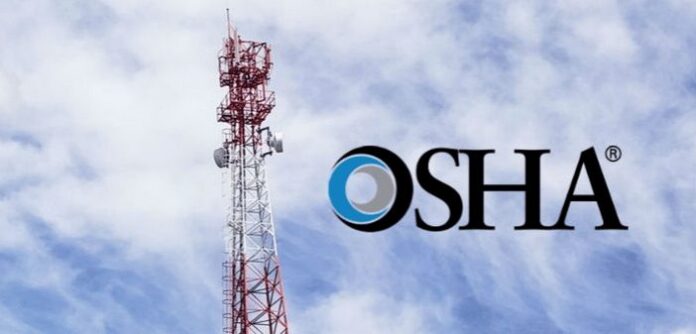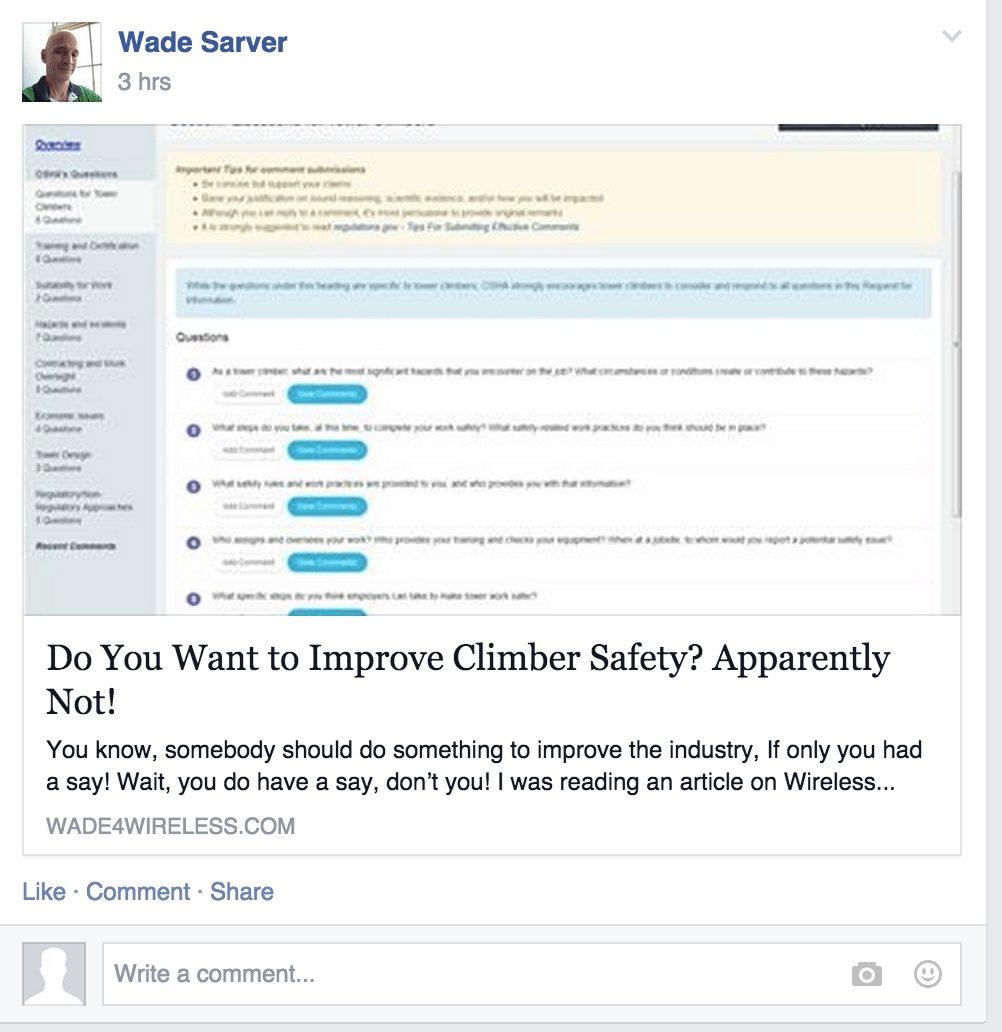Wade Sarver, a prominent blogger who writes about the wireless industry, had some strong words for tower climbers who have not filled out the OSHA RFI safety survey.
Sarver posted the article entitled “Do you want to improve tower climber safety? Apparently not!” in many of the tower-climber groups on Facebook. The article poses the question, “Are tower climbers deadbeats?” Then he adds, “I would bet most people reading this would say no, and yet all you had to do is respond to the OSHA RFI, but you were too busy doing something more important, like shaving your back!”
Sarver, who claims to have been in the wireless industry for over 25 years, goes on to say, “Most of you that didn’t answer probably spend a lot of time on Facebook complaining or posting rude pictures, so why not do something to help the industry?”
Hundreds of Tower career opportunities await. Find your perfect fit at TelecomCareers today!
The survey seeks public input from safety regulators on how to best protect from injury or incident the men and women who work on telecommunications towers.
So far, the turnout for the survey has been quite low. Much to Sarver’s chagrin.
“Maybe we’re fine, maybe the tower industry is fine,” Sarver said. “Maybe all that most climbers are worth are $10/hour to risk their lives. Maybe all the mothers, fathers, brothers, sisters, wives, husbands, boys, and girls that lost a family member mean nothing to you. It wasn’t you that got hurt, only a fellow worker in the wireless industry.”
Last month the Occupational Safety and Health Administration, which oversees workplace safety measures, released a statement that said: “OSHA is aware of employee safety risks in communication tower construction and maintenance activities and is requesting information from the public on these risks. This [request for information] requests information that will assist the Agency in determining what steps, if any, it can take to prevent injuries and fatalities during tower work.”
In July, OSHA will update its communications tower directive, which outlines the proper use of hoist systems used to move workers up and down towers. The directive update came after what OSHA called “an alarming increase in preventable injuries and fatalities at communication tower work sites.”
“This directive ensures that communication tower workers are protected regardless of the type of the work they are doing on communication towers,” David Michaels, assistant secretary of labor for OSHA said. “Employers and cell tower owners and operators must make sure workers are properly trained and protected.”
Sarver leaves climbers with these closing remarks: “You know what, if you’re not going to do it, then maybe we should just continue to blame the climbers for all the faults, after all, most of you are not motivated to change anything. Complacency is the problem, and if you look in the mirror you will see the problem if you choose to do nothing.”


